The School of Architecture / Arizona
Desert Dwellers
In an unforgiving landscape, we meet the architecture students building on Frank Lloyd Wright’s ethos of ‘learning by doing’ – even if that means getting their hands dirty and dodging the odd scorpion.
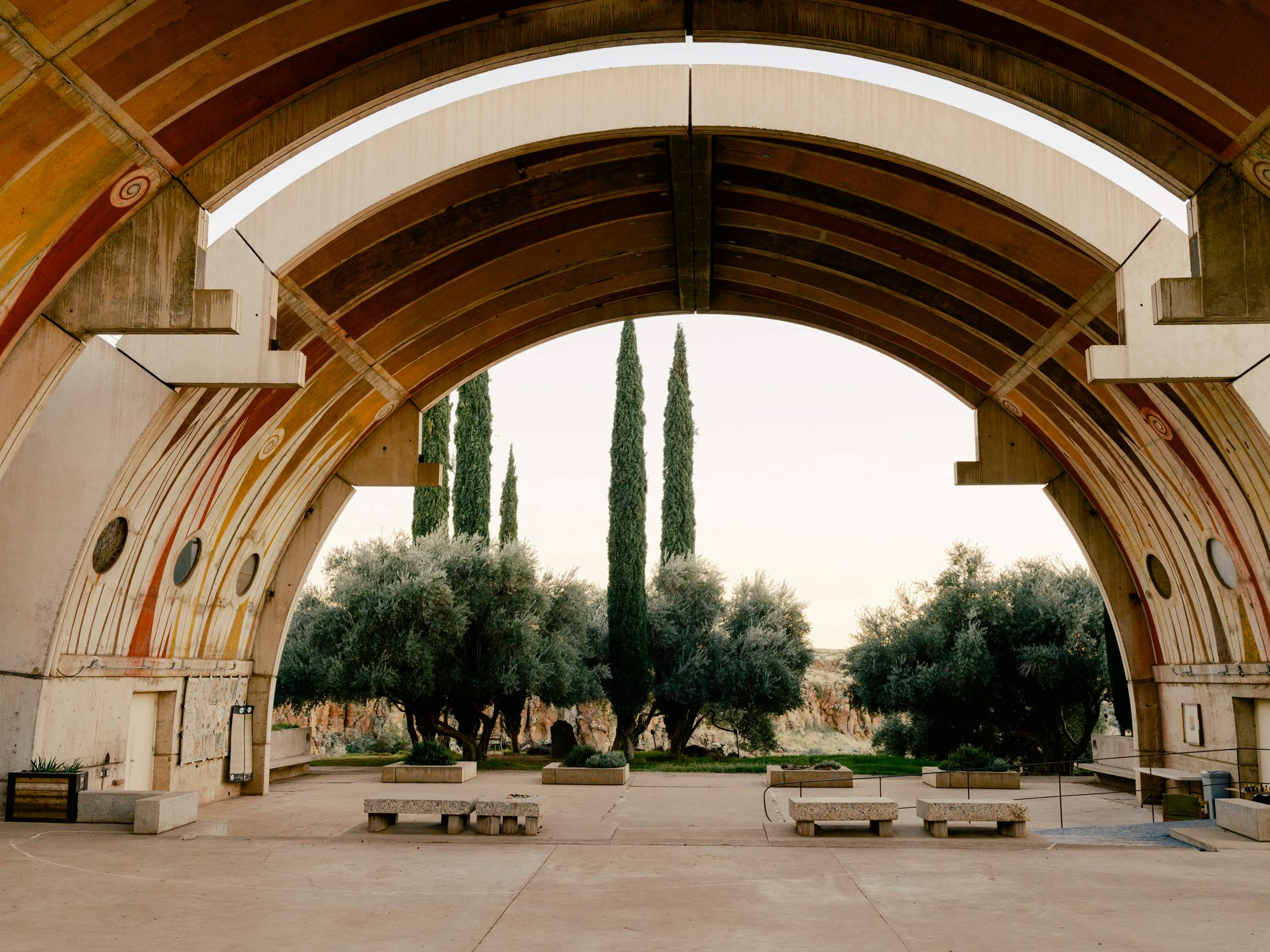
Vaulted space
Field workshops on the campus of The School of Architecture’s in remote central Arizona can be barefoot affairs. When monocle arrives at the Agua Fria river, after dodging a rattlesnake and getting nipped by fire ants, six students with rolled-up trouser legs are wrestling midstream with tiles, car windows and culverts under the shade of mesquite and cottonwood trees.
On this hot October day, French artist Théodora Barat is leading a workshop. She is passing through The School of Architecture (tsoa), an institution with roots tracing back to modernist Frank Lloyd Wright in the early 20th century, whose non-traditional, counter-intuitive style could point to the future of design education. The students,all studying for a masters in architecture, are prompted to make temporary sculptures that either suppress, change or highlight a feature in the river. These materials were salvaged from the “boneyard”, a collection of building supplies that serves the 80-odd inhabitants of Arcosanti, an experimental residential community founded by Italian architect Paolo Soleri in the 1970s where the school’s current campus is located.
Standing barefoot in a high desert stream playing with what charitably could be described as junk stands in contrast to the computer-aided design that dominates contemporary architecture education. But for aspiring designers craving an alternative method that could set them apart from their peers in the job market, tsoa’s embrace of the tangible has a promising future.
“This programme is based on making stuff and not just sitting at a computer, so that’s why I ended up here,” says Dylan Adams, 32, as he adjusts mylar sheets to better capture the desert light.
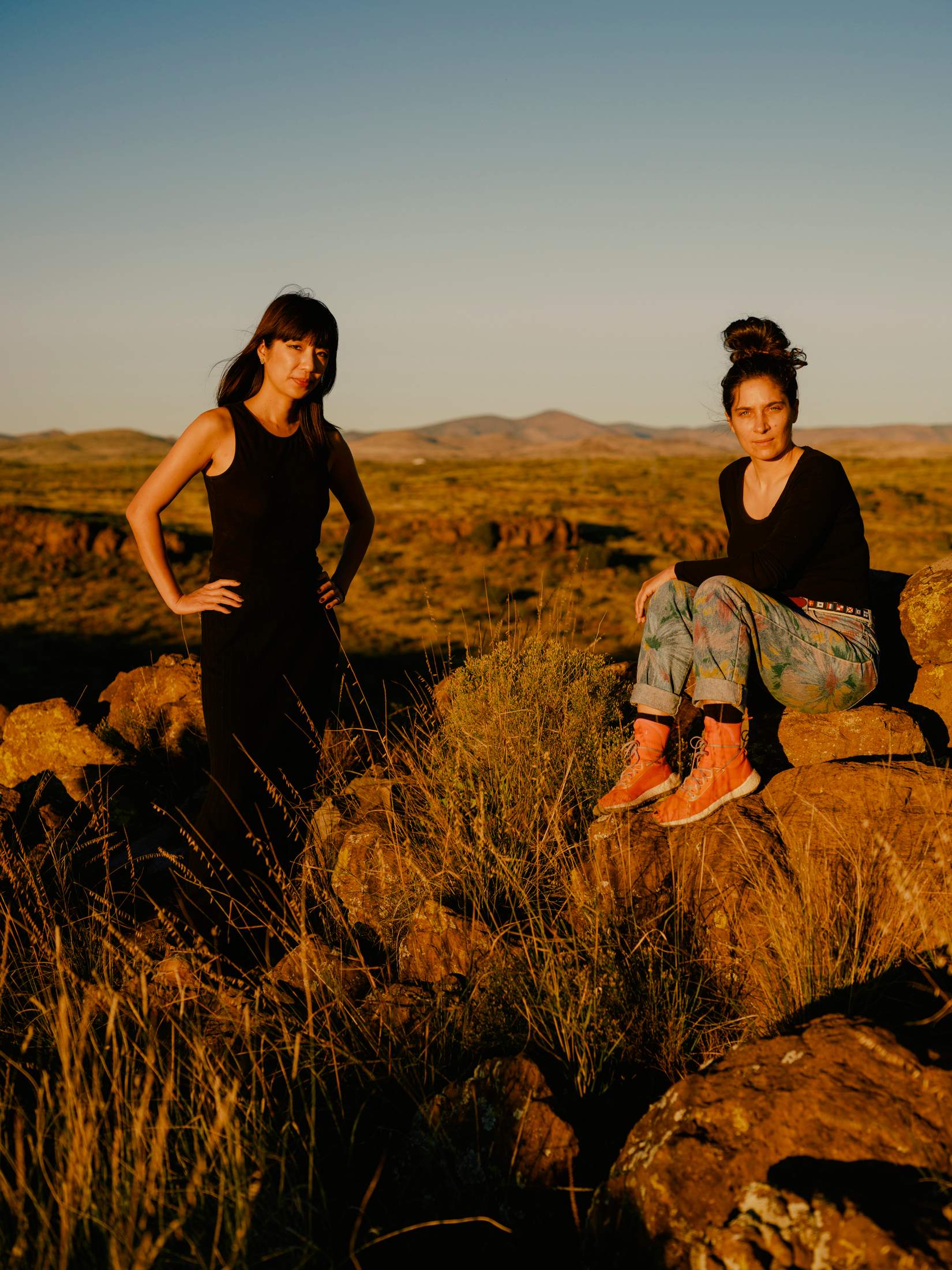
Stephanie Lin (on left) and visiting artist Théodora Barat

Arcosanti Café
As the afternoon heat abates, the students dislodge their sculptures from the river and pack up. We help visiting adjunct faculty Daniel Ayat hoist a milk crate heaving with tiles up a steep embankment, then load it into a red Toyota Camry piloted by the school’s dean, Stephanie Lin. On the short walk back to the concrete apses that are characteristic of Arcosanti’s distinctive and peculiar architecture, we pass a basalt mesa on which perch shelters renovated by recent graduates. The students scatter to their dorm rooms on the campus for some downtime before cocktail hour and dinner with Barat and faculty.
The day encapsulates the school’s three core values: learning by doing, material experimentation and immersive learning. Back in the studio – despite the open-air workshop, tsoa does have a traditional studio with walls to pin drawings, student workstations and reference books – Lin explains the benefits of this model. “Teaching never stops,” she says.
In more traditional settings, a student must book an appointment to receive feedback from a professor. At tsoa, students and faculty, who both live on campus, are next-door neighbours who share communal facilities. “It’s extremely frequent that we’re eating together or running into each other in the kitchen,” she says. “That informal interface is what allows us to interact within different settings.”

Remote site

Visitor centre
Though tsoa settled in to the Arcosanti campus in 2020, its pedigree and pedagogy stretch back 90 years. In 1932, Wright started the Taliesin Fellowship, an apprenticeship programme split between the famed US architect’s Wisconsin estate and Taliesin West, his winter home in Arizona. Hands-on design and learning by doing were core tenets of the fellowship, with apprentices living on site and working on such Wright masterworks as Fallingwater and the Guggenheim Museum. Despite Wright’s antipathy to formal architectural education – “Beware of architectural schools except as the exponent of engineering,” he once wrote – the programme became accredited in 1987 in response to licence requirements and changed its name to the Frank Lloyd Wright School of Architecture.
Since then, however, the school has endured a series of crises that might only now be abating. In 2014 the institutional accreditor responsible for Arizona flagged the school’s affiliation with the Frank Lloyd Wright Foundation as a violation of new regulations; it formally separated from the foundation and was renamed again, this time as The School of Architecture at Taliesin. For a while it continued to operate as a tenant on the Taliesin East and West campuses but, as its first lease neared expiration, the school and the foundation could not come to a renewal agreement on the lease. The foundation claimed that the school was a financial drain that could not sustain itself fiscally and abruptly, in January 2020, the school’s governing board announced that it was ceasing operations.

Students moving found materials around the site
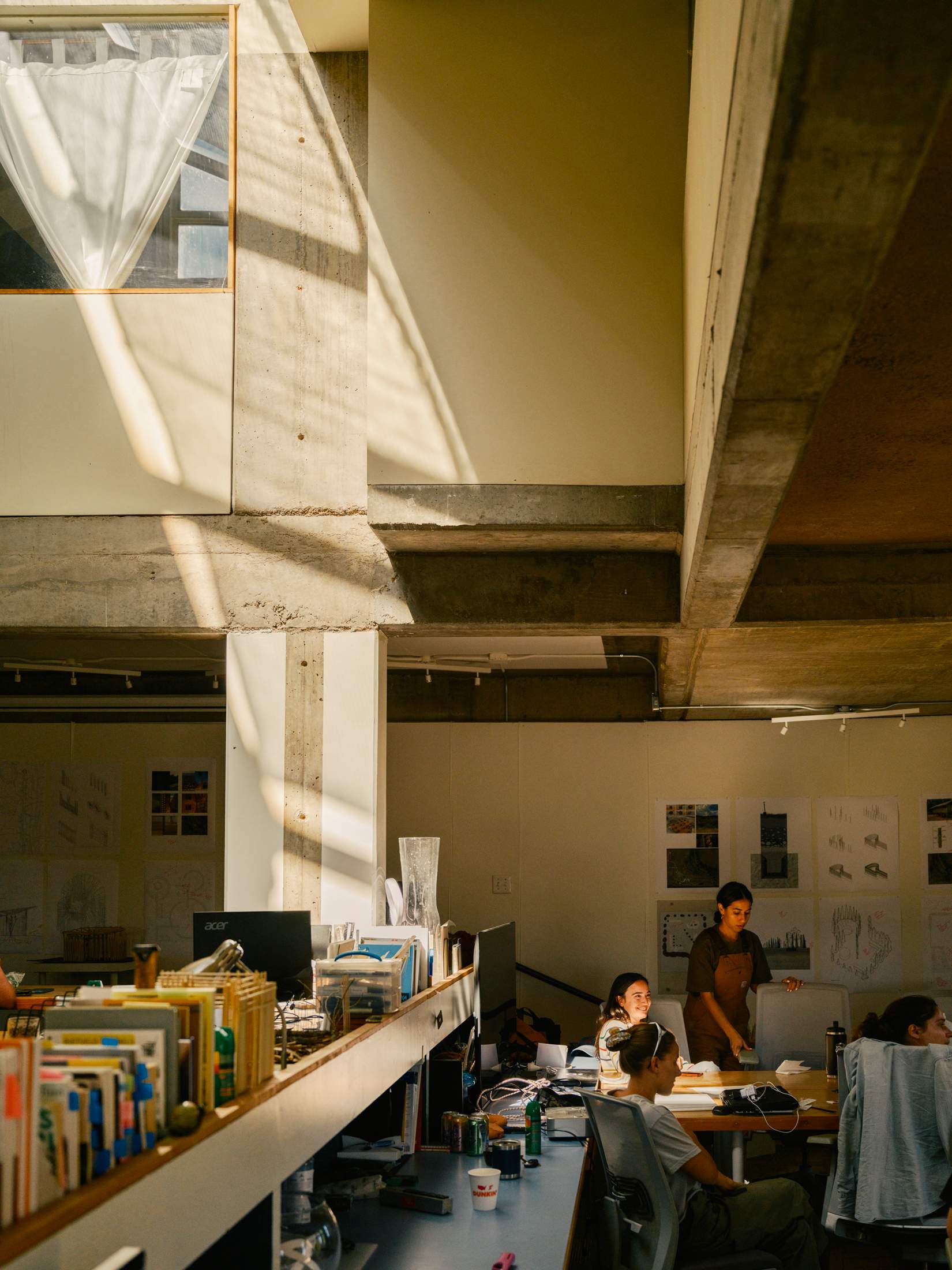
Lunch at the studio
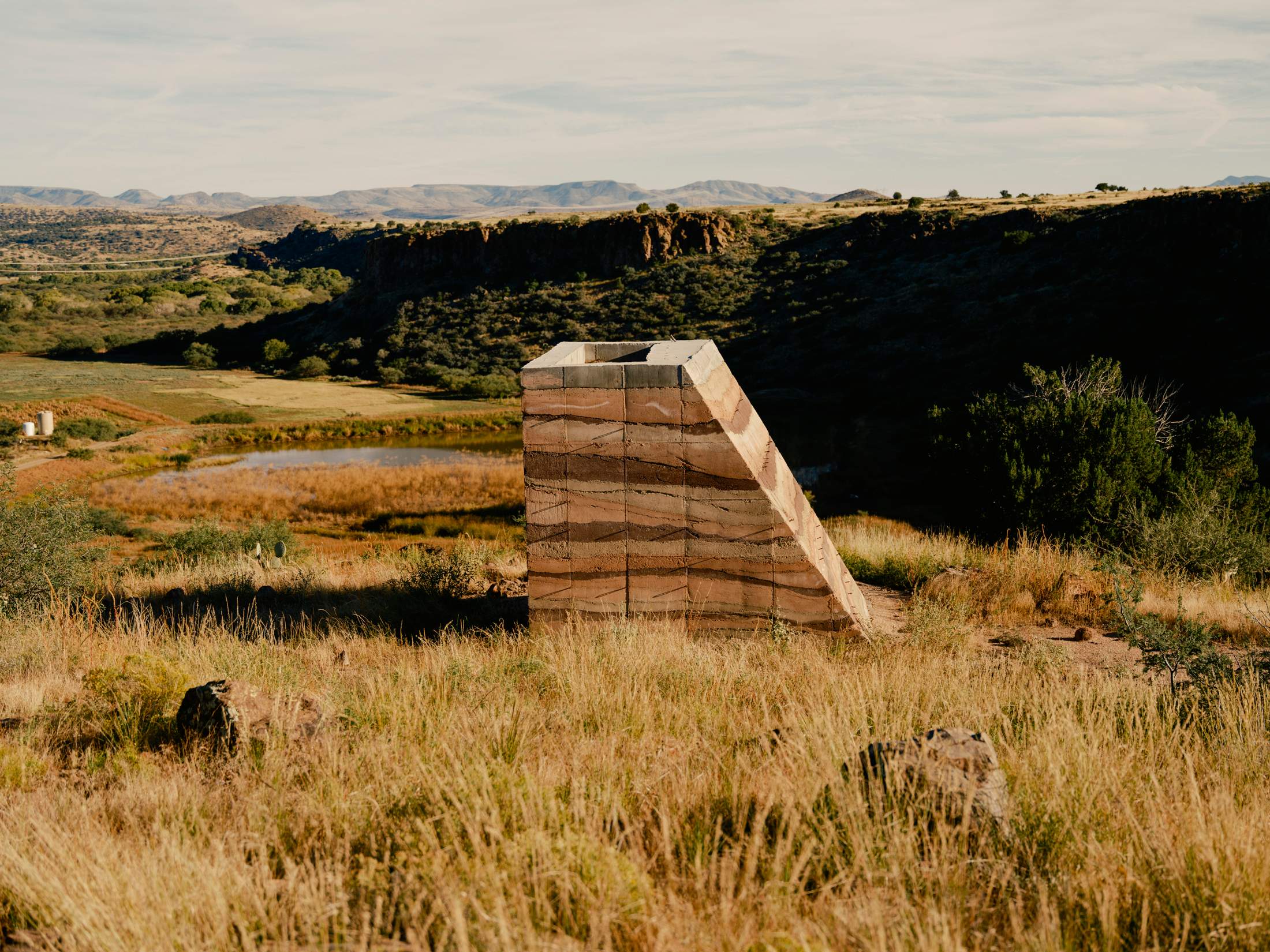
‘Cinders’, Jessica Martin’s rammed- earth shelter
The result was an outcry from both students and graduates, with a petition to save it garnering 30,000 signatures. Meanwhile, alumni published open letters crying shame on the Frank Lloyd Wright Foundation for valuing sales of Wright-branded home decor to tourists over the architect’s legacy in experimental education. In response, the board made a stunning reversal of its closure decision in March 2020. Later that year The School of Architecture, as it is now known, landed at Arcosanti. The school is currently renovating Soleri’s other Arizona project, Cosanti, for a future campus.
The new choice of home is rich in irony. Long before founding Arcosanti, Paolo Soleri was an apprentice in the Taliesin Fellowship but Wright expelled him in 1949, allegedly because Soleri was planning to start his own school in the Taliesin mould in his native Italy. “Being at Arcosanti has given us more intellectual freedom,” says Lin.
If operating under Wright’s shadow influenced the school’s previous iterations, then life at Arcosanti sets a different tone. While apprentices at Taliesin West once hosted black-tie dinners for visiting design dignitaries and sang in a house choir, tsoa has ditched tuxedos in the desert for a more relaxed sartorial style and a low-key environment of weekly communal dinners. tsoa students are also less like zoo animals than they were at Taliesin West, where a steady stream of tourists visited the campus, a Unesco World Heritage Site.
Taliesin West’s polished desert modernism also contrasts with Arcosanti’s scrappy vision. Soleri’s earth-casting method of poured concrete was innovative for its day. As an early adopter of passive solar design, his structure’s orientation towards the horizon warms spaces in winter and keeps them shaded in summer. But the wider pioneering experiment in sustainable architecture remains an elusive dream. Though some 8,000 volunteers have pitched in since the 1970s, Soleri’s urban laboratory remains only 5 per cent built and construction halted in 2008.
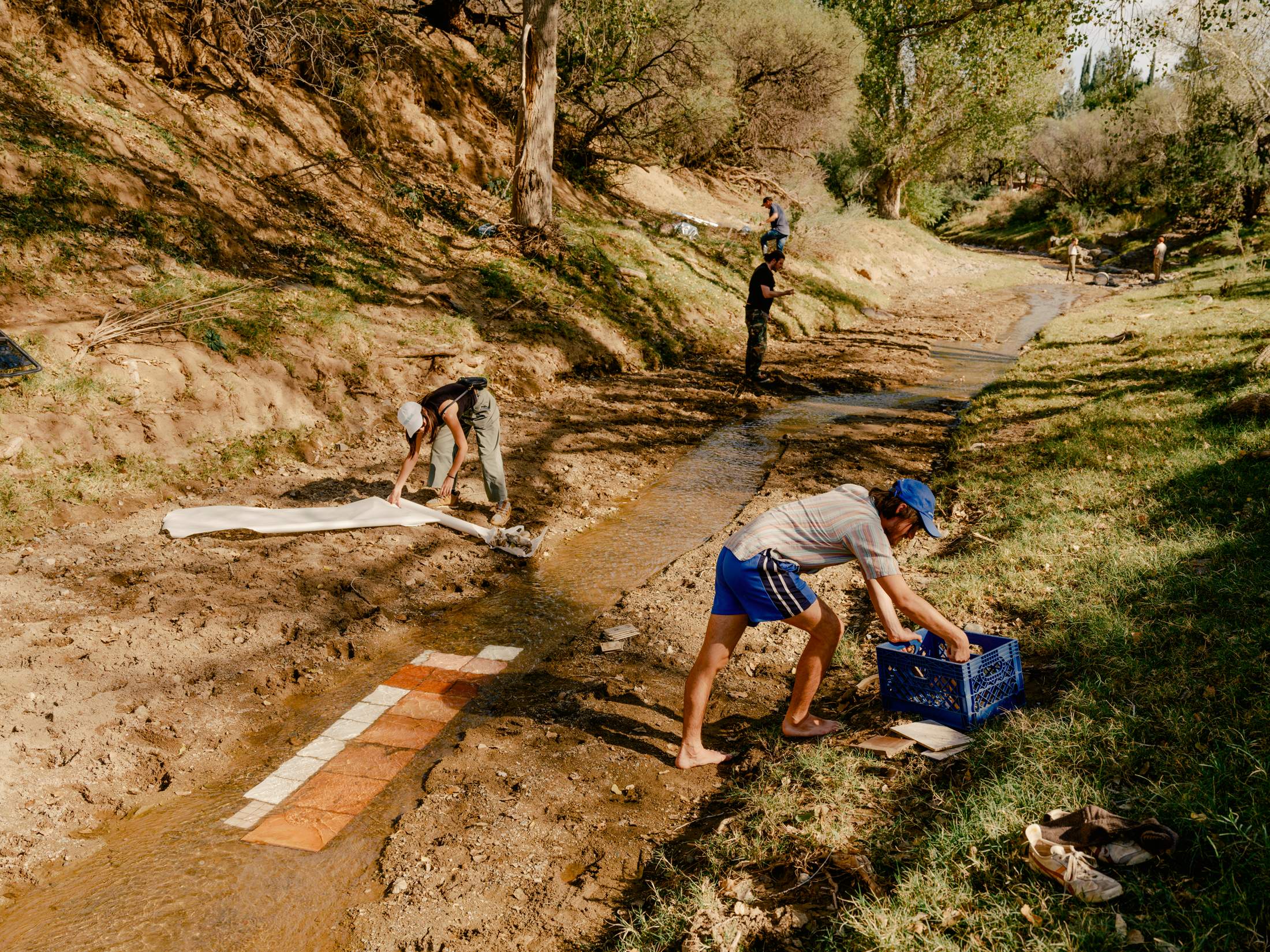
Outdoor workshop
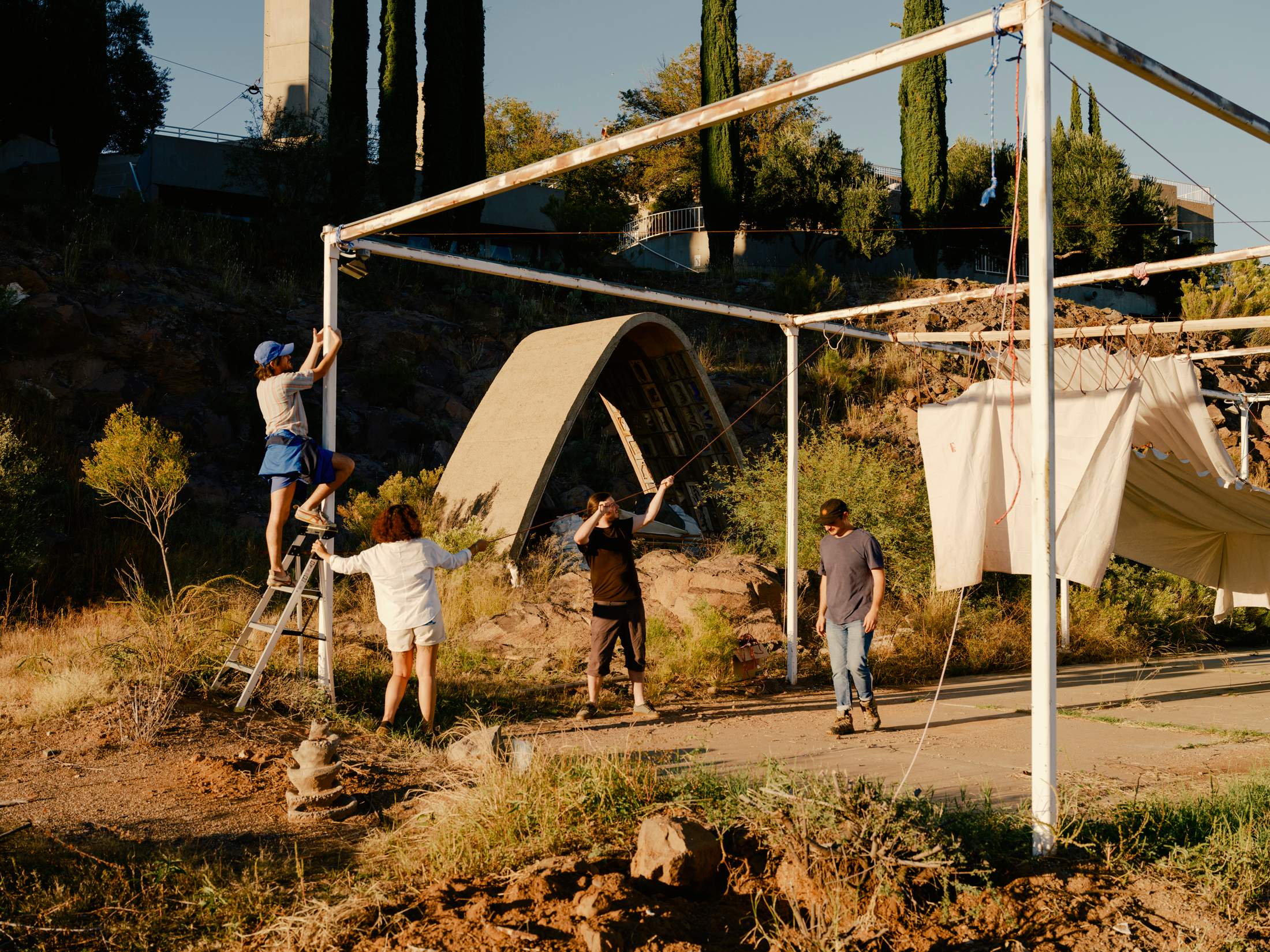
Working on a different kind of thesis
In that vein, Arcosanti fits the US southwest’s legacy of visionary architectural experiments with an ecological bent, from the Michael Reynolds-designed Earthships of Taos, New Mexico, to Peter Jon Pearce’s Biosphere 2 in the Sonoran Desert. They continue to inspire 50 years later. First-year student Nick Gulick, 26, studied environmental technology for his bachelor of architecture at the UK’s Sheffield Hallam University and will now spend the next three years living in a community predicated, in part, on those principles. While Arcosanti is imperfect, he says, it functions as a living laboratory that provokes questions. “Ask yourself why these failures [at places like Arcosanti] happened and what to do about them,” he says.
Soleri’s philosophy of “arcology”, or architecture and ecology, is a variation of Wright’s call for “organic architecture”. Perhaps more than Wright, however, Soleri embraced a free-thinking style that is embodied by the bold architecture of Arcosanti. That too is a useful teaching tool. “The ethos of experimentation is important to create good design that challenges the status quo,” says Ayat, who teaches architectural history and theory.
“Students have already been through the process of getting a project built”
Nowhere is that ethos more apparent than in the school’s shelter programme. At Taliesin West, students slept in shelters that they or their predecessors designed, several of which are now icons of desert architecture, including works by John Lautner and Victor Sidy. At Arcosanti, the shelter programme has evolved beyond single-use residential dwellings and now includes prototypes, temporary structures and communal buildings. Some, like current student Jessica Martin’s rammed-earth trapezoid “Cinders”, channel the traditional shelter spirit in a simple dwelling with unimpeded views across the landscape. tsoa’s emphasis on design and build is key to its graduates’ competitive advantage and, despite being inspired by the tradition of Wright and Soleri, could be an influence on design education more broadly in the coming years. “Employers appreciate that students have already been through the process of getting a project built,” says director of admissions and recent graduate Shelby Hamet. “They understand the build project from concept through construction.”
The school’s flexible curriculum, meanwhile, fashions independent-minded, well-organised architects. “Students learn the skills of project management before they even get jobs,” says Lin. “They are really good problem solvers. Here they self‑initiate and are very outspoken.”
Despite the school’s remote desert location, it remains well connected in the global architecture scene, due to both its pedigree and the rotating cast of faculty with strong industry connections, starting with Lin herself, who is principal of New York-based studio Present Forms. That skill set, in turn, has proven attractive to firms including Herzog & de Meuron, Sauerbruch Hutton, Olson Kundig, Studio Shamshiri and Morphosis Architects, all of which have hired recent graduates.
tsoa also attracts students who plan to go it alone. Mariah Hoffman, 31, is a self-taught builder who bootstrapped her prior education in woodworking, laser-cutting, fabrication and welding. She built her own small house and parlayed that experience into a job with a design-and-build firm. Eventually she would like to expand into residential design, for which she needs to study at an accredited school and earn a licence.
Hoffman tells her story on an open patio overlooking the desert night, pausing for Hamet to smash a scorpion with her boot. The harsh environment, for all its dangers, breeds confidence. “I’m part of this growing cohort of progressive young leaders in the industry,” she says.


